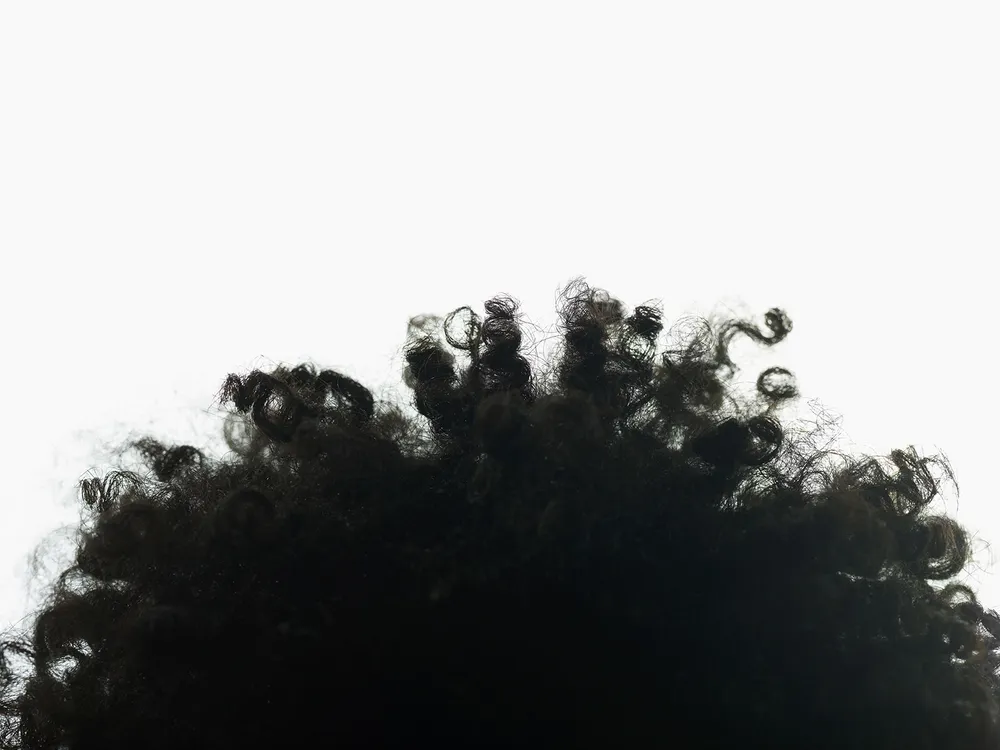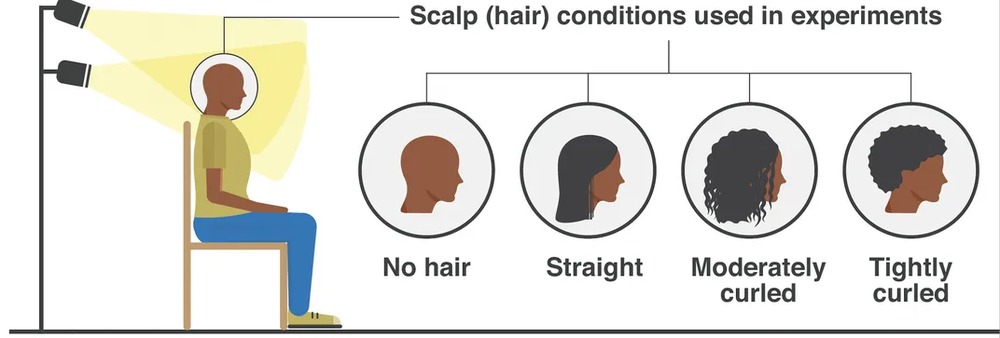A new study suggests our locks may have evolved to prevent our brain from overheating

Tighter curls may dissipate more heat than other types of hair or no hair.
Scientists have long wondered why humans’ scalps are covered in hair even though we are far less hairy elsewhere. A new study published this month in Proceedings of the National Academy of Sciences suggests these strands coming out of our heads may have evolved to stop our ancestors’ large brains from overheating, with curly hair cooling more.
Shielding the head from heat could have been crucial for early hominid ancestors living in Africa under the equatorial sun. “The brain is a large and very heat-sensitive organ that also generates a lot of heat,“ says Tina Lasisi to National Geographic’s Tom Metcalfe. “So we figured, evolutionarily, this could be important—especially in a period of time when we see the brain size of our species growing.”
To better understand how hair affected the temperature of the head, Lasisi and her colleagues placed three different wigs or no wig on a research manikin, called a “thermal manikin.” The manikin was heated to a body temperature of 95 degrees, according to National Geographic, and placed under hot lights in a climate-controlled wind tunnel. The scientists measured the temperature on the manikin’s head when covered with no wig and human hair wigs that had straight strands, loose curls or tight coils—which were similar in thickness and color.

Researchers tested three different wigs to see the effects of hair on head temperature.
Under a simulated sun beaming down at 86 degrees Fahrenheit, the starkest difference in heat was between no hair and hair. The manikin head always became hotter, but adding the straight-haired wig cut that heat gain by more than half compared to a bare head. The moderately-curled wig made the scalp area less hot than the straight-haired wig, and the tightly-coiled wig led to the coolest head.
These results suggest that all kinds of hair protected the scalp from the sun in hot, humid conditions. Curls might further reduce heating by creating a layer of air between the surface and the scalp, the researchers speculate.
Another experiment aimed to simulate sweat on the head by wetting the manikins. In this case, bald heads cooled the most through evaporation of water. But cooling with sweat might not be that helpful overall. Having hair lowered the amount of sweat required to balance the sun’s heat, according to New Scientist.
https://www.smithsonianmag.com/smart-news/curly-hair-keeps-the-head-coolest-but-any-hair-is-better-than-none-180982424/